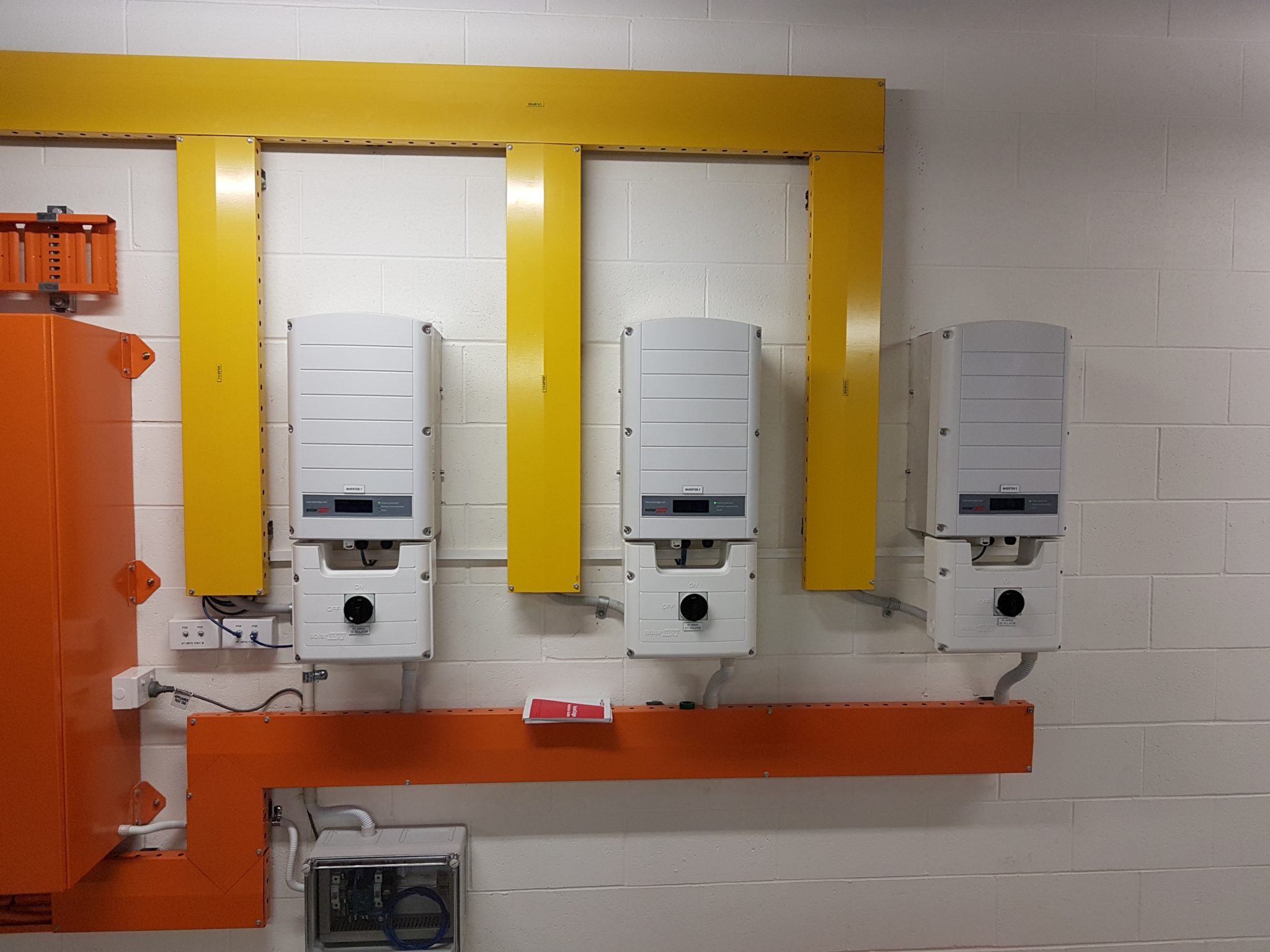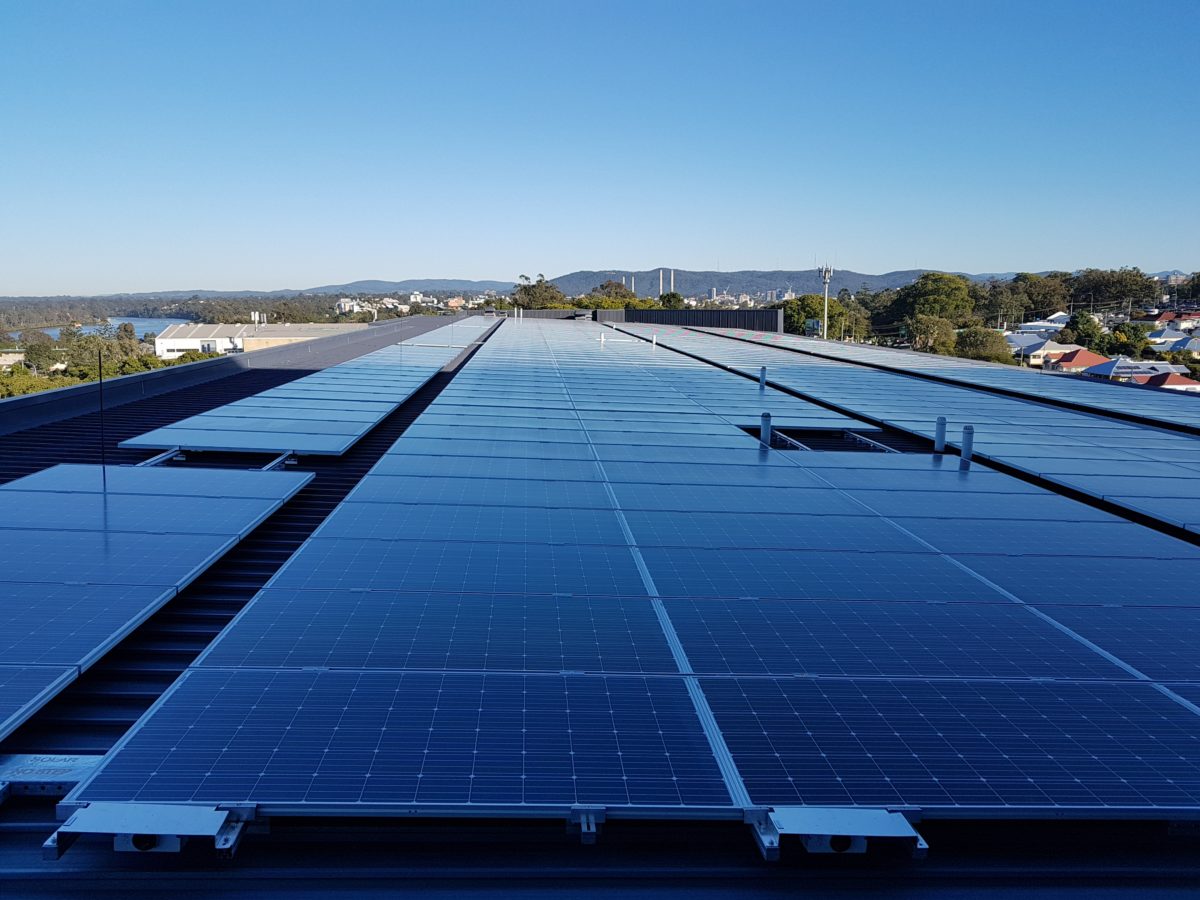The C&I solar PV market segment in Australia is experiencing rapid growth, as the underlying economics of rooftop solar become increasingly compelling. However, with increasing solar penetration, flat and easily accessible C&I rooftops will prove harder to find. This will result in solutions having to be tailored to the available roof space, maximizing the capacity of the installation and the savings for the end customer.
When confronted with a challenging rooftop at the University of Queensland’s Pharmacy campus, C&I specialists Solar Hybrids called on SolarEdge’s DC optimised inverter system to deliver an efficient and cost-effective solution with its module-level optimisation.
“As the level eight roof heavily shades the lower level six roof in the early morning, the SolarEdge solution overcame the problem and allowed us to design a system which fully utilised the roof space of both roofs, while at the same time ensuring the system is one of the safest in the world,” said Gino Fiocco Managing Director of Solar Hybrids.
The final array came in at 226.46 kW, and is a part of a wider UQ solar program that has seen a 3.3 MW research array installed at its Gatton campus, and rooftop projects integrated into its own mini grid. At the UQ PACE facility, located in Woolloongabba close to the heart of the Brisbane CBD, in comparison to a traditional inverter design, an additional 60 kW of modules could be installed in areas of the roof that are shaded at certain times of the day. Without the use of DC optimized technology, entire strings would have been inactive, meaning their installation would simply not make financial sense.
Additionally, individual string lengths could be increased, with the longest totalling 60 modules.
“Longer string lengths means fewer strings overall, which not only facilitates design and installation, but also means fewer balance of system parts with regards to string fusing and combiner boxes,” said Solar Hybrids’ Fiocco.

Image: Solar Hybrids
For some years, power optimizer technology had been generally thought of as being uneconomical or unsuitable for large C&I rooftops. The logic went that as installations increased in scale, the benefits power optimizers deliver become less important. SolarEdge Australia and New Zealand Country Manager Gavin Merchant says that the UQ project, with Solar Hybrids, shows that this is no longer the case.
“Less than ten years ago, some people incorrectly thought that power optimisers were a solution only for residential roofs,” said Merchant. “Today SolarEdge is a top player in the C&I market as its DC optimised solution is scalable. The bottom line is that our technology supports higher revenue and lower Opex and as such provides superior lifetime value for EPCs, O&M providers, and system owners alike.”
UQ has installed rooftop PV across nine of its campuses, with the arrays totalling over 6 MW in capacity. Since installation, they have been delivering close to $9 million in energy savings on a cumulative basis.
The university’s 1.22 MW rooftop array, across four buildings at its St Lucia campus, was installed in 2011 and was 25% than the nearest largest array in Australia at the time of completion. UQ makes the production data from its solar roofs publically available in real time at this site.
“In most cases the economics of a high-end quality commercial PV system is rather compelling, especially when viewed as a long term investment – as should always be the case,” said Solar Hybrids’ Fiocco. “This is fast becoming common knowledge in the commercial world, and by the end of 2018 I believe the secret will have spread like an infectious virus, and commercial solar systems will then walk off the shelves.”
This content is protected by copyright and may not be reused. If you want to cooperate with us and would like to reuse some of our content, please contact: editors@pv-magazine.com.









By submitting this form you agree to pv magazine using your data for the purposes of publishing your comment.
Your personal data will only be disclosed or otherwise transmitted to third parties for the purposes of spam filtering or if this is necessary for technical maintenance of the website. Any other transfer to third parties will not take place unless this is justified on the basis of applicable data protection regulations or if pv magazine is legally obliged to do so.
You may revoke this consent at any time with effect for the future, in which case your personal data will be deleted immediately. Otherwise, your data will be deleted if pv magazine has processed your request or the purpose of data storage is fulfilled.
Further information on data privacy can be found in our Data Protection Policy.